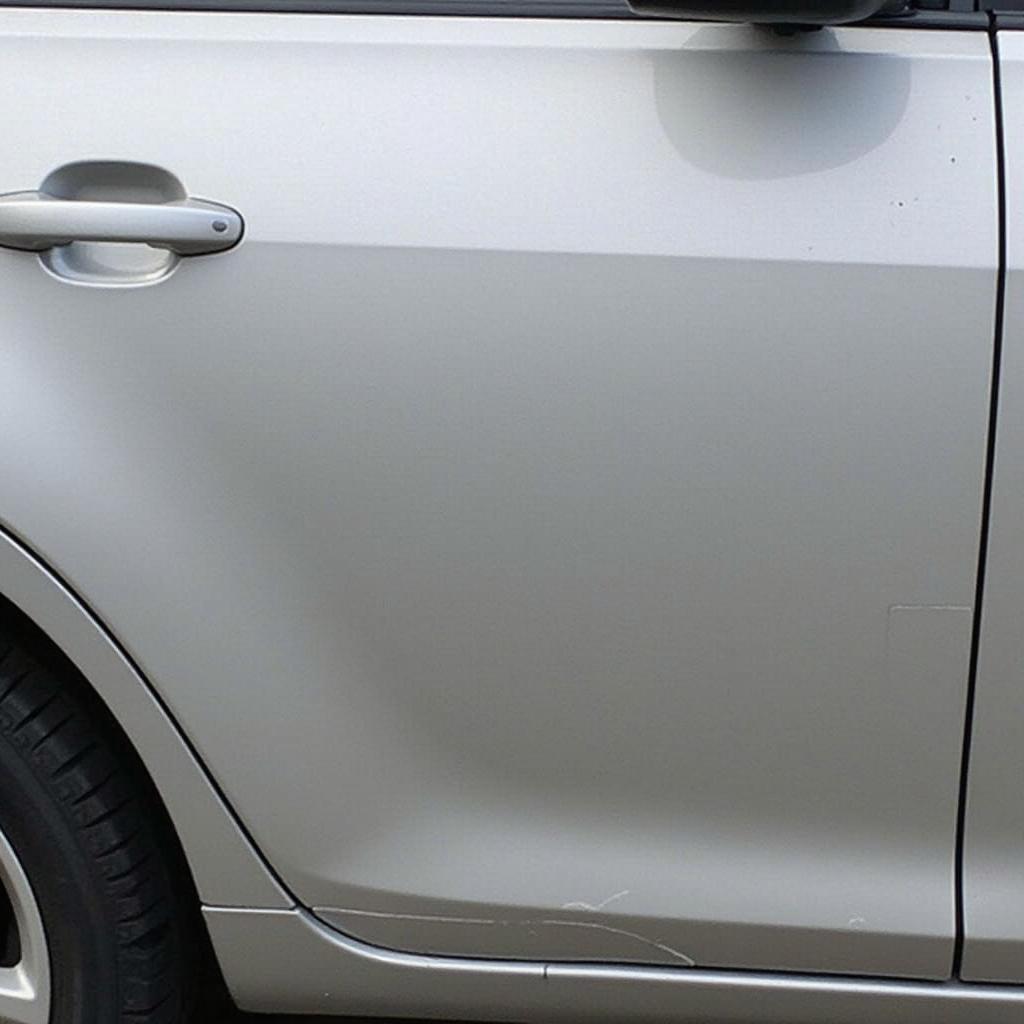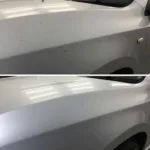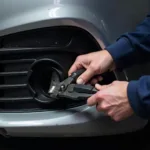Car bodywork repair can be daunting, especially if you’re a first-time car owner facing unexpected dents, scratches, or worse. This guide will equip you with the knowledge to navigate the process confidently, whether you choose DIY fixes or professional help.
Understanding the Basics of Car Bodywork Repair
Before diving into the “how-to,” it’s essential to understand what car bodywork repair entails. It’s more than just aesthetics; it’s about restoring structural integrity and ensuring your safety on the road.
Car bodywork repair encompasses a range of tasks, from minor scratch removal to major collision damage restoration. It involves:
- Damage Assessment: Identifying the extent of damage, including hidden issues beneath the surface.
- Part Repair/Replacement: Deciding whether to repair existing panels or replace them entirely.
- Body Filler Application: Using specialized fillers to smooth out dents and imperfections.
- Sanding and Priming: Creating a smooth surface for paint adhesion.
- Paint Matching and Application: Achieving a seamless blend between the repaired area and the original paint.
- Finishing Touches: Polishing and buffing for a factory-fresh look.
DIY vs. Professional Car Bodywork Repair: Which Route to Take?
The decision to tackle car bodywork repair yourself or hire a professional depends on several factors:
- Extent of Damage: Minor scratches and dents might be manageable with DIY kits, but significant damage requires expert attention.
- Skill Level: Bodywork repair demands patience, precision, and a good understanding of the materials and techniques involved.
- Tools and Equipment: Professional-grade tools, often expensive, are crucial for achieving high-quality results.
- Time Commitment: DIY repairs can be time-consuming, especially for complex issues.
Expert Insight: “While DIY kits can be helpful for minor fixes, remember that car bodywork repair is more than meets the eye,” says Mark Stevenson, an experienced automotive technician with over 20 years of experience. “Improper repairs can lead to rust, paint issues, and even compromise the structural integrity of your vehicle.”
Essential Tools for Car Bodywork Repair
Whether you’re a seasoned DIY enthusiast or a curious car owner, here are some essential tools for car bodywork repair:
- Sanding Block and Sandpaper: For smoothing out body filler and preparing surfaces for paint.
- Body Filler and Putty Knife: To fill dents and imperfections.
- Masking Tape and Paper: Protecting surrounding areas during sanding and painting.
- Primer, Paint, and Clear Coat: For a professional-looking finish.
- Paint Spray Gun (optional): For an even and consistent paint application.
- Safety Gear: Including gloves, mask, and eye protection.
Step-by-Step Guide to Basic Car Bodywork Repair
Let’s walk through the basic steps of repairing a minor dent:
- Clean the Damaged Area: Thoroughly wash and dry the area around the dent.
- Sand the Damaged Paint: Use coarse-grit sandpaper to remove loose paint and create a rough surface for the filler to adhere to.
- Apply Body Filler: Mix a small amount of body filler and apply it to the dent using a putty knife, slightly overfilling the area.
- Sand the Filler: Once the filler dries, use progressively finer grits of sandpaper to smooth it out and blend it seamlessly with the surrounding bodywork.
- Prime the Repaired Area: Apply a thin, even coat of primer to the repaired area to create a uniform surface for the paint.
- Paint the Repaired Area: Apply several thin coats of paint, allowing each coat to dry completely before applying the next.
- Apply Clear Coat: For added protection and shine, apply a few coats of clear coat.
- Polish for a Flawless Finish: After the clear coat dries, use a polishing compound and a buffer to achieve a smooth, glossy finish.
When to Call in the Professionals
While DIY repairs can be satisfying and cost-effective for minor issues, more complex damage requires professional expertise. If your vehicle has sustained damage to the frame, airbags, or other critical components, it’s best to entrust the repair to a certified body shop.
Expert Insight: “Modern vehicles are complex machines with intricate safety features,” advises Sarah Jones, a certified collision repair specialist. “Attempting major repairs at home without the proper training and equipment can be dangerous and may void your vehicle’s warranty.”
Car Bodywork Repair: FAQs
Q: How much does car bodywork repair cost?
A: The cost can range from a few hundred dollars for minor repairs to thousands for major collision damage. Factors include the extent of damage, the make and model of your car, and labor costs in your area.
Q: Can I drive my car with body damage?
A: Minor scratches and dents might not affect drivability, but significant damage can impact safety and handling. It’s best to consult a professional to assess the severity.
Q: How do I choose a reputable car body repair shop?
A: Look for certifications, online reviews, and ask for recommendations from friends or family. A good shop will provide a detailed estimate and walk you through the repair process.
Car Bodywork Repair: More Than Just a Pretty Face
Understanding the basics of car bodywork repair empowers you to make informed decisions about your vehicle’s maintenance. From minor DIY fixes to seeking professional help, remember that maintaining your car’s bodywork is about more than just aesthetics; it’s about ensuring your safety and the longevity of your investment.
Remember, we have a wealth of resources available on car bodywork repair, including:
- Car Bodywork Repair in Scottish Borders
- Car Bodywork Repair
- Car Bodywork Repairs in New Milton
- Car Bodywork Dent Repair Companies in Edinburgh
- Car Bodywork Repairs in Sidcup
For any further questions or assistance, feel free to reach out to our 24/7 customer support team via WhatsApp: +1(641)206-8880, or Email: cardiagtechworkshop@gmail.com. We’re here to help you navigate the world of car repair with confidence!



